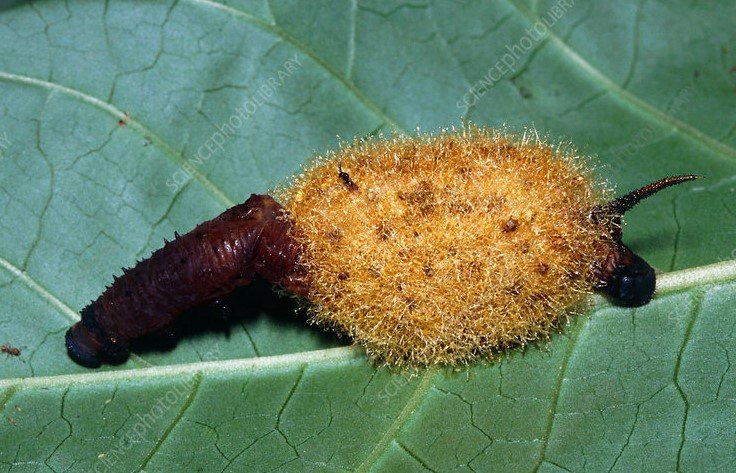In a chilling display of nature’s brutality, parasitic wasps are turning caterpillars into living nurseries for their young, a process that mirrors scenes from sci-fi horror films. Recent reports from 2025 highlight how these insects inject eggs into hosts, leading to gruesome emergences that have shocked gardeners and scientists alike.
The Shocking Discovery in Backyards
Parasitic wasps have long fascinated and horrified observers, but fresh attention in 2025 stems from viral videos and studies showing their alien-like behavior up close. These tiny predators target caterpillars, using them as incubators in a cycle that ensures their offspring’s survival.
Experts note that species like the ichneumonid wasps have evolved this strategy over millions of years. In gardens across the UK and US, sightings have spiked this autumn, coinciding with caterpillar populations on plants like cabbage.
One key factor driving interest is a 2025 study published in a major journal, which details how wasps detect hosts through chemical cues. This year alone, reports from places like New Zealand and Australia show introduced wasps controlling pest populations, but at a terrifying cost to their victims.

How Parasitic Wasps Hunt and Infect
Female wasps scout for suitable hosts with precision. They zero in on caterpillars feeding on leaves, drawn by the mix of saliva and plant scents.
Once located, the wasp strikes quickly. She mounts the caterpillar, often larger than herself, and injects eggs using a needle-like ovipositor.
This injection includes venom that alters the host’s behavior and physiology. The caterpillar continues eating, unaware of the invaders growing inside.
In some cases, wasps can lay up to 30 eggs in seconds, as seen in high-speed footage from recent entomology research.
Gardeners in 2025 have reported more encounters, especially with cabbage white butterfly caterpillars ravaged by these parasites.
The Gruesome Growth Inside the Host
After eggs hatch, larvae feed on the caterpillar’s non-vital tissues first. This keeps the host alive to provide a fresh food source.
Over days or weeks, the larvae grow, consuming more as they develop. Some species release chemicals that turn the host into a zombie-like guardian.
For instance, certain wasps make the caterpillar spin silk to protect wasp pupae after emergence. This manipulation ensures the young wasps survive predators.
Recent data from 2025 field studies show larvae can number in the dozens per host, leading to a burst-out scenario straight from horror stories.
Dramatic Emergence and Host’s Tragic End
The climax comes when mature larvae chew through the host’s body. They punch out, often from the abdomen, leaving the caterpillar weakened but sometimes alive.
In a bizarre twist, some hosts then guard the wasp cocoons, fending off threats until the adult wasps emerge. This bodyguard behavior stems from chemical control by the parasites.
Videos circulating on social media in 2025 capture this moment, with viewers comparing it to alien chest-bursters. Once free, young wasps fly off to repeat the cycle.
Not all hosts die immediately; some linger, their bodies hollowed out, in a fate that has sparked ethical debates among biologists.
Here are key stages in this horrific process:
- Egg injection: Wasp lays eggs with venom to paralyze and control.
- Larval feeding: Young eat host from inside, avoiding vital organs.
- Emergence: Larvae exit, often in groups, through the skin.
- Pupation: They form cocoons, sometimes protected by the dying host.
Ecological Role and Human Impact
Despite the horror, these wasps play a vital role in ecosystems. They control pest populations, benefiting agriculture by reducing crop damage from caterpillars.
In 2025, farmers in regions like the Midwest US have turned to parasitic wasps as natural biocontrol agents amid rising pesticide resistance. Studies show they can cut pest numbers by up to 50 percent in some fields.
However, introduced species sometimes disrupt native wildlife. For example, wasps brought to New Zealand have affected local insects, prompting calls for balanced management.
This balance highlights nature’s complexity, where predators like these maintain food chains.
| Wasp Species | Common Host | Emergence Method | Ecological Benefit |
|---|---|---|---|
| Ichneumonid | Caterpillars | Chew through abdomen | Pest control in gardens |
| Braconid | Aphids and larvae | Burst from body | Reduces crop pests |
| Glyptapanteles | Moth caterpillars | Exit and pupate nearby | Natural insecticide alternative |
| Tarantula hawk | Spiders | Paralyze and bury | Controls spider populations |
Recent Studies and Public Reactions
New research in 2025, including a PLOS Pathogens paper, reveals how wasps deplete host blood cells for their advantage. This preemptive strategy ensures larval success.
Public fascination has grown, with X posts and Reddit threads sharing videos of wasps dragging paralyzed hosts. One viral clip from July 2025 shows a wasp burying a caterpillar alive for its egg.
Scientists warn that climate change could expand wasp ranges, leading to more interactions with humans. Entomologists recommend observing from afar to appreciate their role without fear.
As autumn 2025 progresses, these stories remind us of nature’s raw ingenuity.
What do you think about these parasitic wasps? Share your thoughts in the comments below, and pass this article along to fellow nature enthusiasts.








